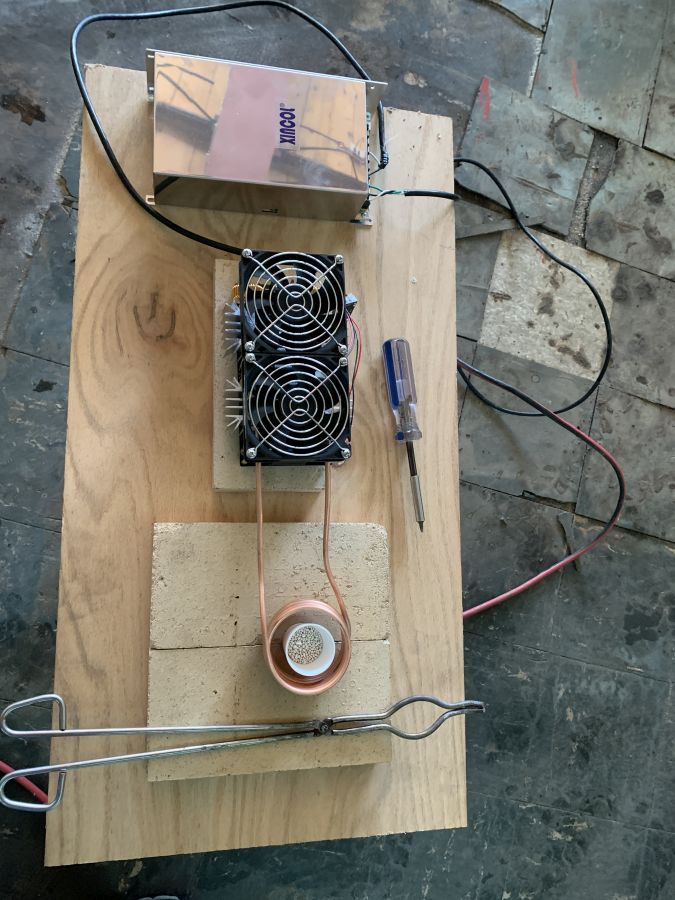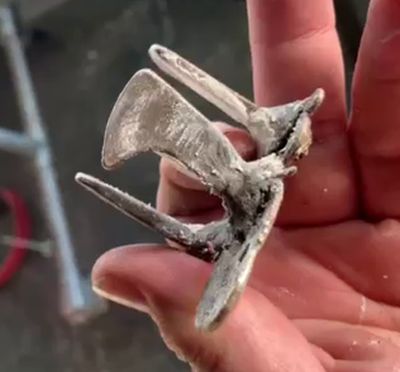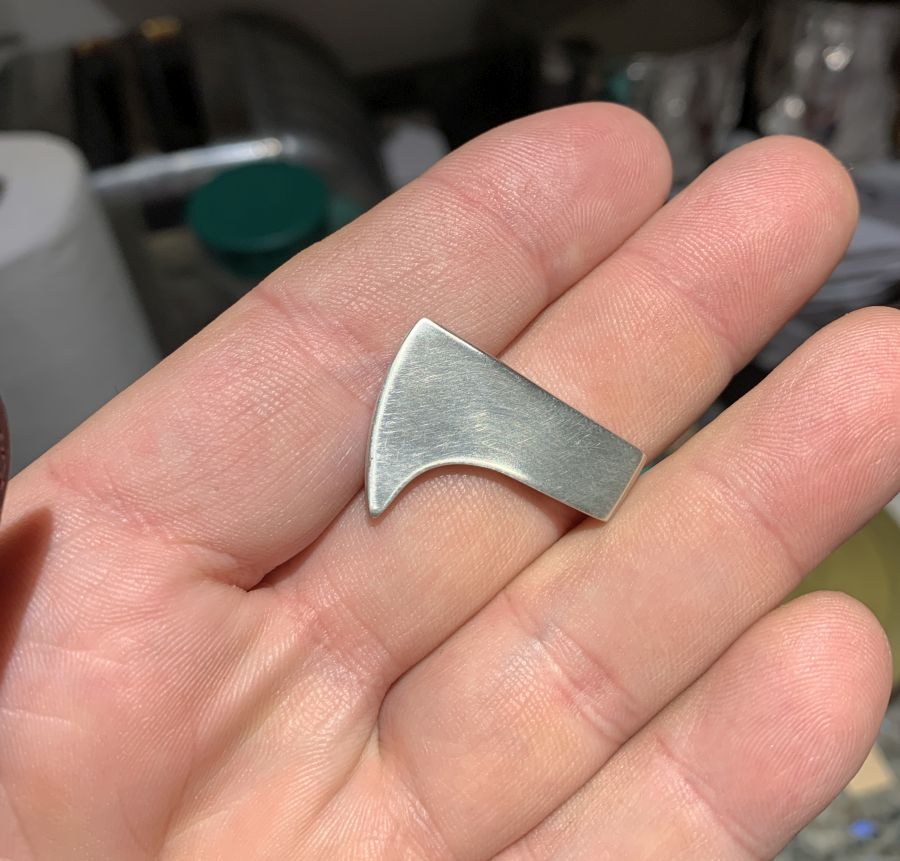A year ago I obtained one of those electronic induction heaters, because, why not? They’re fascinating. Some blacksmiths use them to produce high point-heat, including bringing small regions of steel to welding heat in about a minute (more or less). Induction heating is also used by some craftspeople to melt/slump glass in home microwave ovens – you put a block of insulating material containing your target into your microwave and turn it on for 10 minutes. Then, if you still have a microwave oven and kitchen, you can let it cool down and examine the contents.
Here’s what my rig looked like before I turned it on:

And here’s what my rig looked like, when I turned it off:

Yes, those are the same picture. A little LED on the power supply came on, and after about a minute the copper coil began to warm to the point where I could feel heat coming off of it. There was no sign of anything glowing and certainly no sign of anything melting.

not a very good image; frame from a short video clip
I am disappointed but not surprised. Rather than sit around and cry, I put the induction heater rig in the closet (from which it may never re-emerge) and blasted the crucible with a bit of the old oxy/acetylene torch. Guess what melts silver really fast? 3000C is around 5500F and silver’s melting temperature is balmy compared to that.
Then, I poured the silver into my investment mold and dunked the mold in cold water, hammered the investment apart, and – ta-da!
Lately, for cutting silver, I have hit on the technique of using 6″ jigsaw blades in a jeweler’s saw. “Patience is a virtue that I don’t possess” (- Ray Wylie Hubbard) then I took the pieces over to the belt sander and surfaced them, fine-sanded them, and finally hand-sanded and buffed them.
I had carved some runes in the side of one of the waxes, and they came through pretty well, but weren’t deep enough to survive surface sanding. If I ever do more of these, I need to scribe the wax a lot harder. Live and learn.

It’s a bit thin at the back to put a handle in, so I guess I’ll put a ring somewhere back near the butt, and call it a neck-thing.
I have a couple more of these things. Anyone need a small tactical axe for itty bitty lycanthropes? I probably won’t auction any of these because they’re not worth anything, really, and they’re a pain to polish.

“Here’s what my rig looked like before I turned it on:”
That was rather mean. I had the highest of expectations. Expectations involving charred and smoking things, mainly.
As for the result… berserker key chain? I guess it might not be able to stand up to the punishment key chains usually have to endure but then that’s true for most novely key-thingies so you’d merely be comlying with industry standards.
Doesn’t the induction heater rely on the material being magnetic? There are many kinds, but the most common type wants to heat iron or another material that can be alternately magnetized and demagnetized (the heat comes from the hysteresis losses, not from eddy currents).
Looks like they cast very nicely. Do you have much trouble with firescale with this system? I have to say it would look really cool with a nice little handle, but putting a jump ring on it will work just fine.
That induction heater is really fancy looking and it looks like it will do **something** super cool – too bad it did not work as expected. Maybe it would make a nice movie prop! Or perhaps there is some other type of thing that it will make really hot.
cvoinescu:
No.
It relies on electrical conduction, by inducing currents via a changing magnetic field.
(Of course, even an insulator is a conductor, given enough field strength)
Induction hobs (the kind used for cooking) rely on magnetic hysteresis. Aluminium pans don’t work; the ones that do have a steel insert in the base. Some industrial induction heaters rely on conduction, so they need pieces large enough to have significant eddy currents.
So you need either a large piece of metal, or a magnetic metal, and I’m asking which applies for this type of induction heater. Neither type will heat small beads of non-magnetic material.
@John Morales, cvoinescu:
So you need either a large piece of metal, or a magnetic metal, and I’m asking which applies for this type of induction heater. Neither type will heat small beads of non-magnetic material.
I figured it was something like that. So, the microwave oven “kilns” people use for glass must have a metal plate in them. Basically, the “do not put a spoon in a microwave oven” only deliberate.
I gotta admit the oxy/acetylene torch is more fun, anyway.
kestrel@#3:
Do you have much trouble with firescale with this system? I have to say it would look really cool with a nice little handle, but putting a jump ring on it will work just fine.
I have some firescale but it mostly sands right off. It’s not a suitable system for fine jewelry. I hope to get to that someday.
The axelet looks good.
I rather like my induction hob and I keep forgetting how much time regular hobs (safe gas) take. But I did have to get new frying pans.
Maybe a thick-walled graphite crucible would work with the induction heater. It would be worth a try, IMO.
Charly@#9:
Maybe a thick-walled graphite crucible would work with the induction heater. It would be worth a try, IMO.
I have a graphite crucible. Good idea!